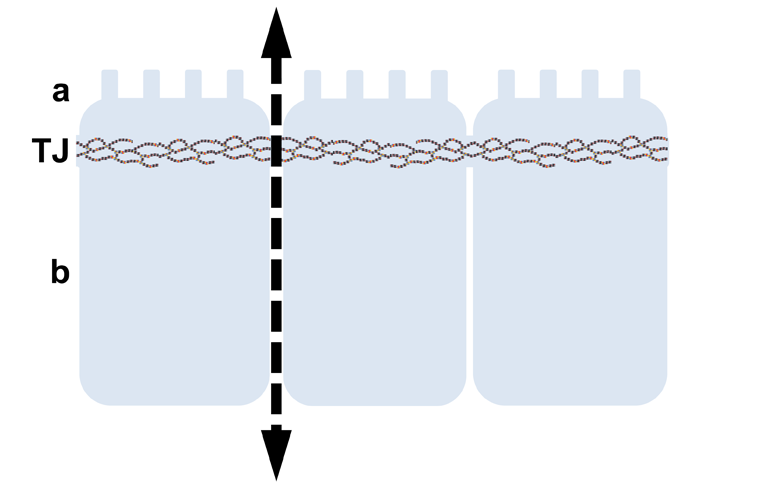Epithelial barrier research
Univ.-Prof. Dr. Salah Amasheh
Königsweg 56, Hs. 11
14163 Berlin
Tel.: +49 30 838 62602
E-Mail: salah.amasheh@fu-berlin.de
Tight junctions attach neighboring epithelial cells, providing the barrier function of epithelia. This barrier is a prerequisite for vectorial transport processes, and for the function of organs and tissues.
Tight junctions are organized in strands. Within these strands, a number of membrane proteins could be identified, which are responsible for sealing and for providing selective paracellular permeability in epithelia.
The working group “Epithelial Barrier Research” focuses on analyses of function and regulation of tight junctions in relation to organ physiology and pathophysiological processes.
In addition, clinically relevant aspects, as preventive sealing mechanisms or an intended opening of the tight junction for absorption enhancement (e.g. for drug targeting) are analyzed.

Schematic image of an epithelial monolayer.
Tight junctions encircle epithelial cells and attach them tightly to their neighbors. They are organized in strands and they are composed of an organ- and tissue-specific mosaic of membrane proteins, which selectively determine paracellular sealing and permeability (arrow), a: apical membrane (with microvilli), b: basolateral membrane.
Keywords
- Tight Junctions
